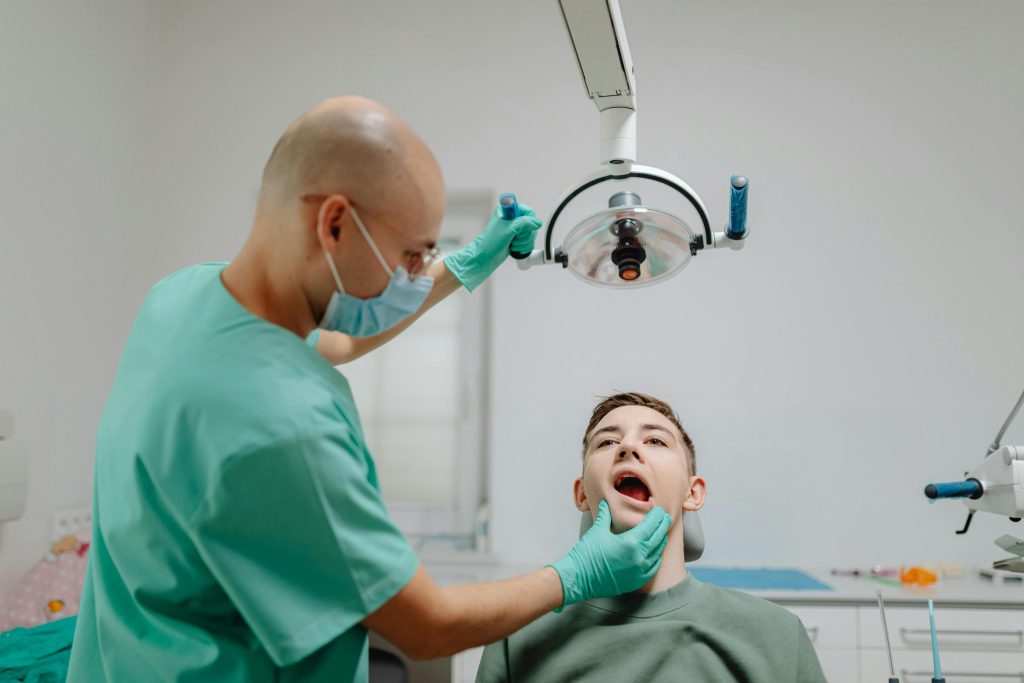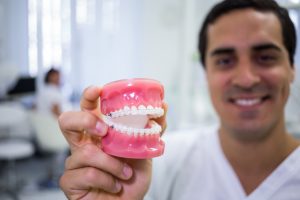Tooth pain in front tooth can catch you off guard. It’s not something most people expect since the front teeth aren’t used as heavily as molars. But when that sharp ache or dull throb hits, it can affect everything from how you eat to how you speak. If you’ve been wondering why your front tooth suddenly hurts or what could be causing it, this blog breaks it down for you.
Whether you’re experiencing minor discomfort or something more serious, an experienced orthodontist in Graham, WA can help diagnose the issue and recommend the right treatment. You’ll find common reasons this type of pain happens, how to get relief, and when it’s time to book a dental appointment.
What Does Tooth Pain in Front Tooth Indicate?
Pain in a front tooth might seem minor at first, but it’s often a sign that something deeper is going on. It could be as simple as sensitivity or as serious as an infection.
Here are some of the most common symptoms to look out for:
-
Pain when biting or touching the tooth
-
Sensitivity to hot or cold
-
Aching that comes and goes
-
Swollen or red gums above the affected tooth
-
A visible crack or chip
Common Causes
-
Tooth Trauma
A bump to the mouth or even clenching your teeth too hard can injure the front teeth. Damage may not always be visible, but it can still affect the nerve inside. -
Decay or Cavities
Cavities aren’t just a problem for molars. When plaque builds up on the front teeth, it can eat away at enamel and cause pain. -
Enamel Erosion
Brushing too hard or frequent acid exposure from foods and drinks can wear down enamel, exposing the sensitive layer underneath. -
Gum Recession or Disease
If the gums pull away from the tooth, it can expose the root. This can make your tooth more sensitive and painful. -
Dental Abscess
An untreated infection can lead to an abscess, which often brings swelling, throbbing pain, and even a bad taste in your mouth. -
Sinus Pressure
In some cases, sinus issues can cause discomfort in the upper front teeth. It’s not always the tooth itself causing the pain.
Pain in your front tooth shouldn’t be ignored. The sooner you figure out what’s causing it, the easier it is to treat.
Is It a Dental Emergency? How to Know When to Act Fast
Not all tooth pain needs urgent care, but some situations should be taken seriously. If you’re dealing with tooth pain in front tooth and it’s getting worse or affecting your daily routine, it’s best not to wait.
Here’s how you can tell it might be a dental emergency:
Immediate Warning Signs
-
Pain that doesn’t go away after a day or two
-
Swelling in the gums, lips, or face
-
A loose or wiggly tooth without any recent trauma
-
Dark discoloration in the tooth
-
Fever or a general feeling of being unwell
These symptoms could point to an infection, nerve damage, or structural problems in the tooth. Leaving them untreated may lead to more complications, including tooth loss or the spread of infection.
When You Can Wait a Day or Two
-
Mild sensitivity to temperature
-
Minor discomfort when biting
-
Occasional aching without swelling
Even in these cases, it’s a good idea to call your dentist and explain what’s going on. Catching a problem early can prevent it from turning into something more serious.
If you’re ever unsure, it’s safer to contact your dentist than to ignore the issue. Pain in the front tooth can move quickly from manageable to urgent, especially if an infection is involved.
Treatment Options for Tooth Pain in Front Tooth
The right treatment depends on what’s causing the pain. A dentist will first examine your front tooth, possibly take an X-ray, and then recommend the best course of action. If you’re experiencing tooth pain in front tooth, here are the most common solutions your dentist might suggest:
Professional Dental Treatments
-
Dental Filling or Bonding
If there’s a small cavity or chip in the tooth, your dentist may use a filling or bonding material to seal the area and stop the pain. -
Root Canal Treatment
If the nerve inside the tooth is infected or inflamed, a root canal may be needed to remove the damaged tissue and preserve the tooth. -
Fluoride Application or Desensitizing Products
For pain caused by enamel erosion, fluoride or special pastes can help strengthen the enamel and reduce sensitivity. -
Gum Treatment
If gum disease is contributing to the pain, scaling and root planing or other periodontal care can reduce inflammation and protect the exposed tooth root. -
Abscess Drainage and Antibiotics
When an infection is present, your dentist may need to drain the area and prescribe antibiotics to clear it up. -
Mouth Guard or Bite Adjustment
If grinding or clenching is the issue, a night guard or bite correction may help reduce pressure on the front teeth.
At-Home Care for Temporary Relief
-
Rinse with warm salt water to ease gum irritation
-
Take over-the-counter pain relievers like ibuprofen
-
Avoid biting with the painful tooth
-
Switch to a soft-bristled toothbrush and brush gently
-
Use toothpaste for sensitive teeth until you see your dentist
These steps won’t fix the root cause but can help manage discomfort until you get professional care. Don’t rely on home remedies alone if the pain continues or worsens.
Preventing Future Tooth Pain in Front Tooth
Once the pain is treated, keeping it from coming back is just as important. Prevention doesn’t require major changes—just consistent habits that protect your teeth and gums. If you’ve already experienced tooth pain in front tooth, these tips can help you avoid another round.
Daily Habits That Make a Difference
-
Brush gently with a soft-bristled toothbrush twice a day
-
Floss daily to clean between teeth and under the gumline
-
Use a fluoride toothpaste to help strengthen enamel
-
Rinse with water after acidic drinks like soda or juice
-
Don’t use your teeth to open things or bite hard objects like pens or ice
Protect Your Teeth from Damage
-
Wear a mouthguard during sports to prevent trauma to the front teeth
-
Ask your dentist about a night guard if you clench or grind while sleeping
-
Avoid chewing on hard or sticky foods that can chip or crack the front teeth
Keep Up with Dental Visits
-
See your dentist every six months for cleanings and checkups
-
Address minor issues early—small problems can grow quickly if left untreated
-
Mention any discomfort, even if it feels minor
Being consistent with your routine and paying attention to changes in your teeth can go a long way in preventing front tooth pain down the line.
When to See a Dentist for Tooth Pain in Front Tooth
Some discomfort can wait a bit, but not all tooth pain should be ignored. If you’re experiencing tooth pain in front tooth that lingers or keeps coming back, it’s time to book an appointment. Ignoring early signs often leads to more complex problems and more involved treatments.
Make an Appointment If You Notice:
-
Pain that lasts more than two days
-
Visible damage like a crack, chip, or dark spot
-
Swollen or bleeding gums around the front tooth
-
Sensitivity that doesn’t improve with toothpaste for sensitive teeth
-
Pain when biting or applying slight pressure
You May Also Want to Call Your Dentist If:
-
You’ve had past trauma to the area, even if it happened months ago
-
You feel a strange sensation like pressure or tingling near the front tooth
-
Over-the-counter pain relief isn’t working
Even if the pain isn’t constant, that doesn’t mean the issue is minor. A quick exam can help catch small problems before they get worse. Front teeth are essential for appearance and function—taking care of them is worth it.
Frequently Asked Questions About Tooth Pain in Front Tooth
Can front teeth get cavities just like back teeth?
Yes, front teeth can develop cavities, especially if plaque builds up or oral hygiene is inconsistent. Small cavities in front teeth can still cause significant discomfort.
Is sensitivity in my front tooth always a sign of a problem?
Not always, but if it continues for more than a few days, it’s worth checking out. It could be caused by worn enamel, gum recession, or early decay.
How do dentists find the cause of front tooth pain?
They usually start with an exam and may take X-rays to check for decay, cracks, infections, or gum issues that aren’t visible to the eye.
Can stress or grinding cause front tooth pain?
Yes. Many people grind or clench their teeth during sleep or under stress. This pressure can strain the front teeth and cause pain over time.
What’s the fastest way to relieve tooth pain in front tooth at home?
Rinse with warm salt water, use a cold compress, and take an over-the-counter pain reliever like ibuprofen. These methods can help temporarily but aren’t a substitute for dental care.
Conclusion: Don’t Ignore Tooth Pain in Front Tooth
Tooth pain in front tooth isn’t something to brush off. It can point to anything from mild sensitivity to serious infection. Figuring out what’s causing it early makes treatment easier and prevents bigger problems down the road.
Keep an eye on your symptoms, practice good daily care, and don’t wait too long to see a dentist if something feels off. Front teeth play a key role in how you eat, speak, and smile—keeping them healthy should always be a priority.
If you’re dealing with front tooth pain, schedule a dental checkup soon. A quick visit can give you answers and relief.
Take the First Step Toward a Healthier Smile
If you’ve been dealing with tooth pain in front tooth or have concerns about your dental health, the team at Smiles Orthodontics is here to help. We combine advanced technology with years of experience to deliver care that’s thorough, thoughtful, and focused on long-term results.
Smiles Orthodontics was founded on the belief that everyone deserves a confident, comfortable smile. Led by Dr. Bobby Virk and Dr. Helena Skountrianos, our expert team offers trusted care through personalized treatment plans and cutting-edge tools to support your progress every step of the way.
We offer free consultations, flexible payment options, and a care experience designed around you. Contact Smiles Orthodontics today and start moving toward a smile that feels great and functions even better.



